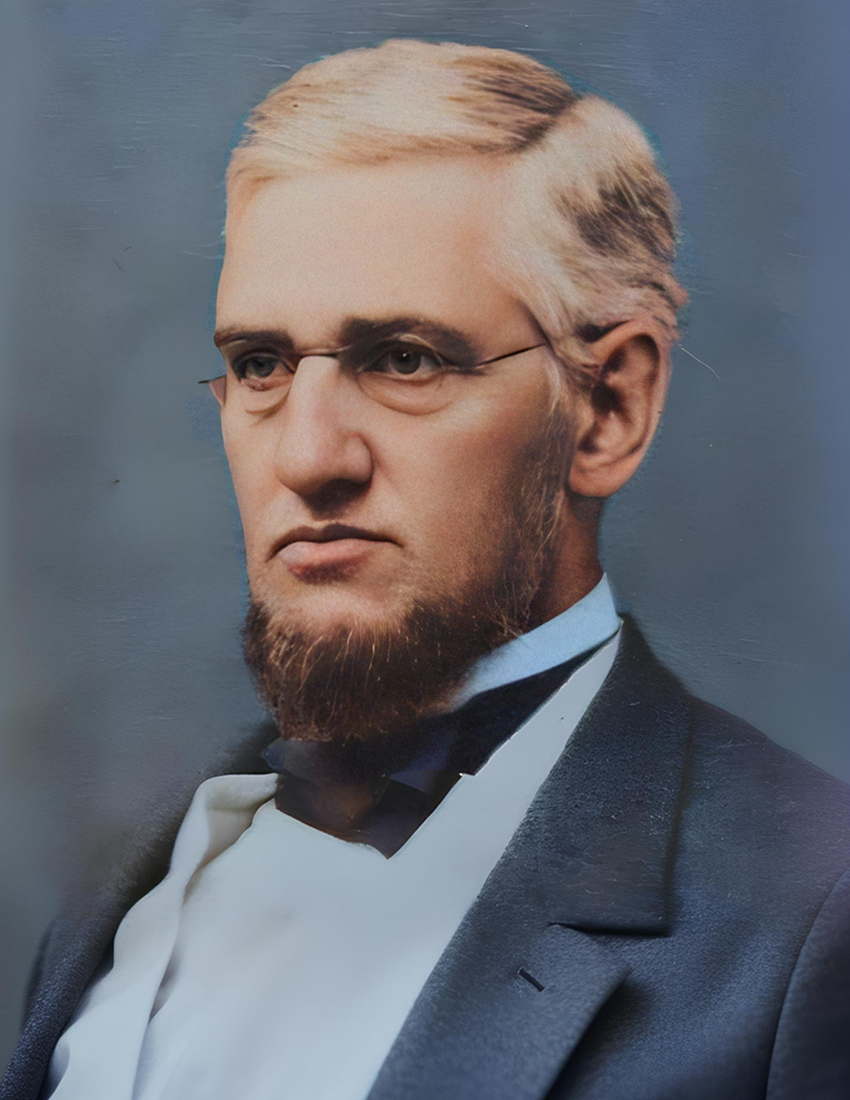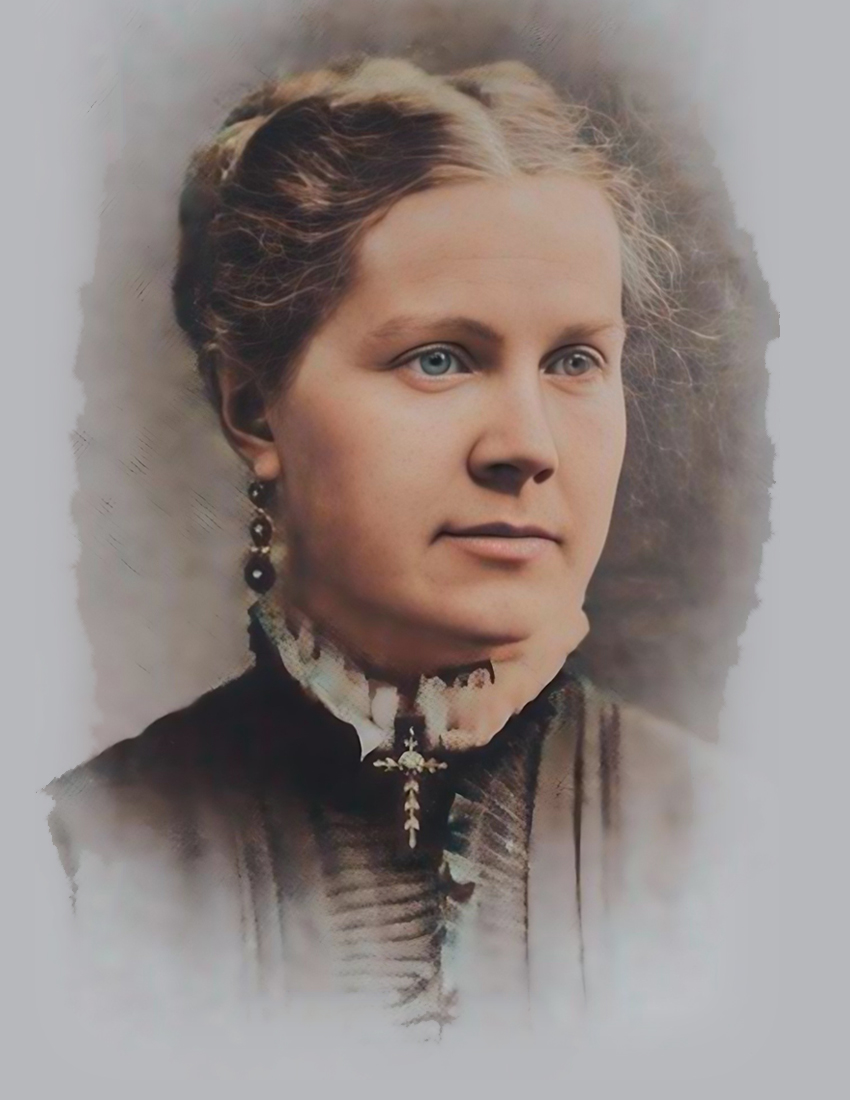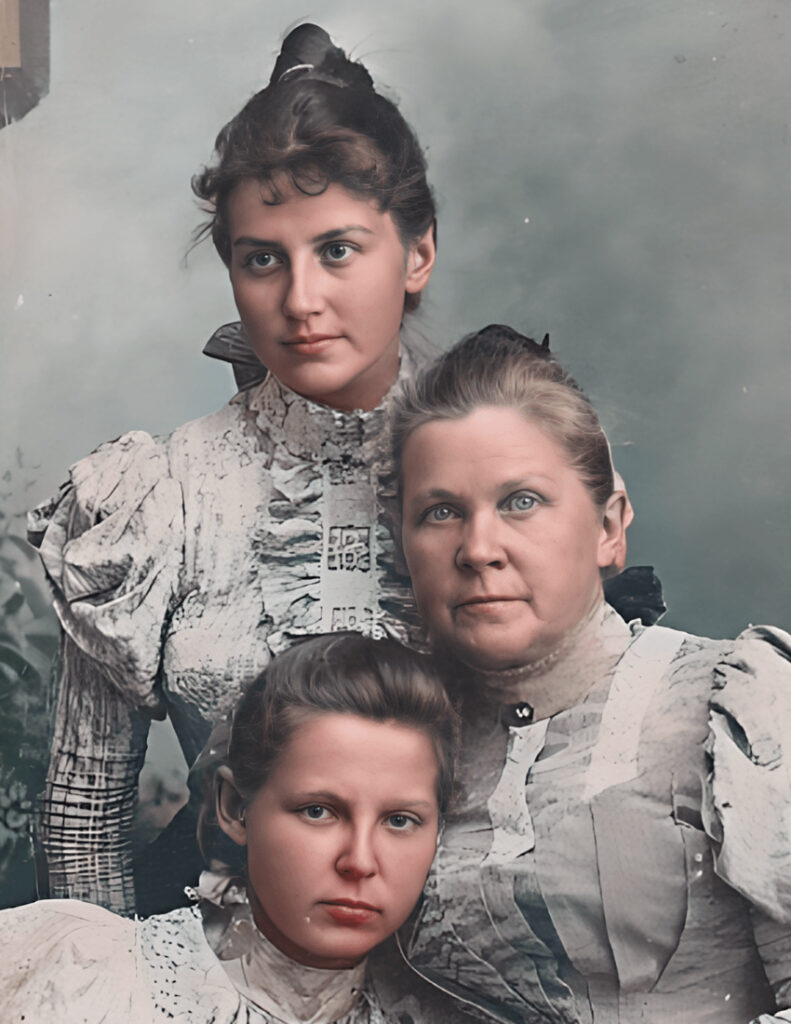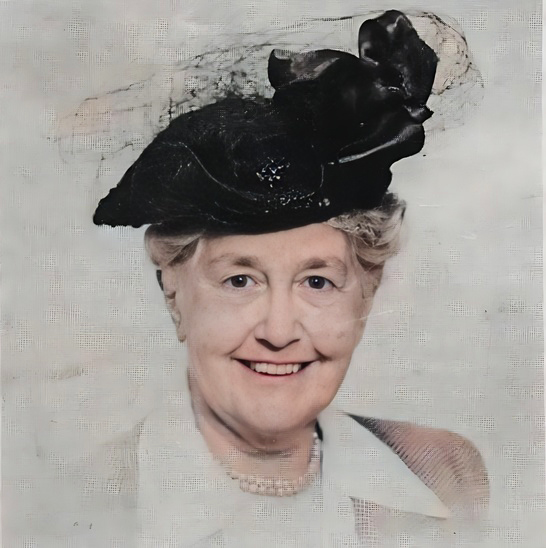How the Spaffords’ Journey Led to the Iconic American Colony in Jerusalem
Bertha Spafford Vester was a true force of nature. Born in Chicago, she journeyed to Jerusalem as a child with her parents, eventually becoming a key figure in managing the Colony’s affairs and continuing its mission. Through a century of change – the fall of empires, two world wars, and the birth of nations – Bertha never wavered. She married, raised six children and traveled the world. But her heart always belonged to the children of Jerusalem.
On Christmas Eve 1925, she founded the Anna Spafford Children’s Home, a beacon of hope that still shines bright today, nurtured by the loving hands of her descendants. Her grandchildren and great-grandchildren, both American and British, remain deeply involved in the well-being and management of what is now known as the Spafford Children’s Center, making sure that Bertha’s legacy of compassion and service endures. In the words of author Lowell Thomas, “Hers is indeed one of the epic stories of our time.”
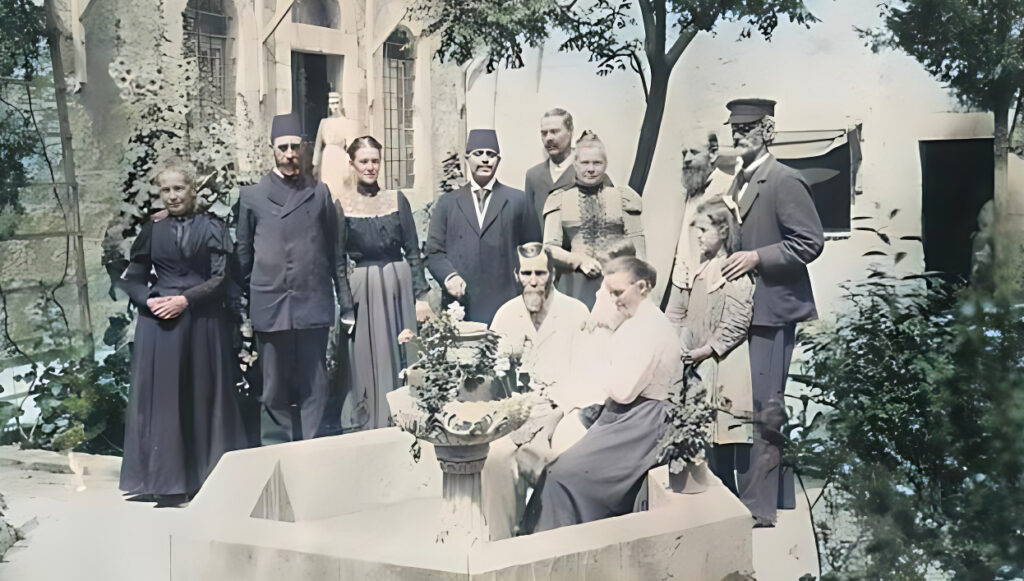
In the late 19th century, a group of Americans led by Horatio and Anna Spafford embarked on a remarkable journey from Chicago to Jerusalem. Seeking solace and purpose after enduring unimaginable tragedies, they established the American Colony, a Christian utopian society that would leave an indelible mark on the Holy City.
The Spaffords: Overcoming Tragedy
Horatio and Anna Spafford, once pillars of Chicago’s religious community, found their lives shattered by an unrelenting series of tragedies. The Great Chicago Fire of 1871 ravaged Horatio’s real estate investments, and just two years later, the couple’s four beloved daughters perished when their ship tragically sank during a voyage to Europe.
Returning to Chicago, the Spaffords struggled to piece together their broken lives. The birth of their daughter Bertha in 1878 brought a glimmer of hope, but the arrival of their son Horatio two years later was quickly overshadowed by the child’s untimely death during a scarlet fever epidemic. As the couple grappled with their seemingly inescapable misfortunes, rumors swirled through their church community, with some questioning what the Spaffords had done to incur such divine punishment.
Faced with mounting grief and a crisis of faith, Horatio left the Fullerton Presbyterian Church, a ministry he had helped establish, at least partly to theological disagreements. A group of the Spaffords’ closest friends also chose to abandon the church, united in their resolve to seek spiritual guidance in Jerusalem. With the birth of their daughter Grace in August 1881, the Spaffords, accompanied by a band of thirteen adults and three children, embarked on a transformative journey to the Holy City, determined to find healing and renewed purpose in the face of their sorrow.
Establishing the American Colony
In 1881, the Spaffords, along with the small group of fellow Americans, arrived in Jerusalem and established the American Colony. They settled in the Old City and embraced a communal lifestyle centered around philanthropic work. The colony gained the trust and respect of Jerusalem’s diverse religious communities, as they served the needs of the poor and marginalized, regardless of faith.
Growth and Expansion
As word of the American Colony’s good works spread, the community grew. In 1896, a group of Swedish Christians led by evangelist Olof Henrik Larsson joined the colony, nearly doubling its size. The colony expanded its facilities, establishing a farm, a bakery, a carpentry shop, and other essential services. They also opened a hostel to accommodate the increasing number of visitors drawn to their unique way of life. At its height, the colony numbered 150 people.
Documenting Jerusalem’s History
One of the American Colony’s most significant contributions to Jerusalem’s history was its photographic division. Led by Elijah Meyers and later by Hol Lars (Lewis) Larsson and G. Eric Matson, the colony’s photographers captured invaluable images of the city and its surroundings. Their work, which extensively documented archaeological sites and significant events, garnered worldwide attention and remains a priceless resource for scholars today through a gift of partial archives to the Library of Congress.
Steadfast Through War and Adversity
During World War I, Jerusalem found itself caught between the clashing Allied and Central powers. The American Colony played a crucial role in supporting the local population, providing food, shelter, and medical care to those in need. Despite the hardships and dangers, the colony’s photographers continued to document the war’s impact on the region, creating a visual record of this turbulent period.
A Lasting Legacy
Although the American Colony as a religious community disbanded in the 1950s, its legacy endures. The Spafford Children’s Center, established in the colony’s original building, continues to provide essential services to Jerusalem’s underserved children and families. Moreover, the American Colony Hotel, run by a Swiss firm but still owned by descendants of the Spaffords, stands as a tribute to the colony’s enduring spirit of hospitality.
Paul Vester, a great grandson of the Spaffords, is the Chair of the American Colony Hotel Board of Directors. He is also Faculty Emeritus, School of Film/Video at the California Institute of the Arts (CalArts). Vester says the hotel, sitting directly between east and west Jerusalem, is considered neutral for Israelis and Arabs. Journalists, politicians and celebrities are regular guests.
The story of the American Colony is one of resilience, compassion, and unwavering faith in the face of adversity. From the ashes of personal tragedy, the Spaffords and their fellow colonists built a community that transcended religious and cultural boundaries, leaving an incredible mark on Jerusalem’s history. Today, their legacy serves as an inspiring reminder of the power of love, service, and the indomitable human spirit.
Postscript: The American Colony: Cult or Mischaracterized Community?
The history of the American Colony in Jerusalem has been a topic of debate and speculation. Was it born out of Horatio’s loss of faith? As a church music major I mostly heard the fabled tale of the hymn, with occasional comments like “Spafford fell into apostacy in later life” from my conservative Christian university professors.
Now, as I’ve researched this fascinating tale, I’ve found every single “hit piece” on the Spaffords draws from a single source: a book by Jane Fletcher Geniesse. It’s worth noting that Geniesse, a former New York Times journalist, is a liberal Democrat and environmental activist. While everyone is entitled to their own perspective, it’s important to consider how an author’s background and beliefs might shape their interpretation of historical events, particularly when it comes to topics as deeply personal and emotionally charged as faith and religion.
In “American Priestess: The Extraordinary Story of Anna Spafford and the American Colony in Jerusalem,” Geniesse paints a picture of a cult-like organization led by Anna Spafford after her husband Horatio’s death. According to Geniesse, Anna ruled the colony with an iron fist, using prophecies and strict rules to control her followers, who lived in celibacy and poverty while turning over all their resources to her religious order.
However, a starkly different perspective emerges from “Our Jerusalem,” the 1950 memoir written by Anna’s daughter, Bertha Spafford Vester. Vester, who lived in Jerusalem from the age of two until her death in 1968, presents a contrasting view of her mother’s life and the American Colony. She maintains that many of the stories Geniesse recounted were nothing more than rumors, hearsay, and slander perpetrated by the US Counsels in Jerusalem. The two men who served in the role for many years deeply resented the American Colony’s influence in the area.
It wouldn’t be the first time the U.S. government has been accused of distorting facts to suit its own agenda. The colony’s work during the late 19th and early 20th centuries speaks for itself. They fed and helped educate Muslims, Jews, Christians, and Turks in late-nineteenth-century Jerusalem, with no intention of missionizing or converting anyone. Their only agenda was to await the Second Coming in the Holy Land while living among the people and modeling a Christian community.
During World War I, as Americans and thus neutral, they ran hospitals in the ancient city, providing vital medical aid to all in need. The American Colony Photography studio’s documentation of significant events in Jerusalem during this period also suggests a community dedicated to bearing witness to the world around them.
In her writings, Bertha portrays Anna as a deeply religious woman whose unwavering belief in Christian principles of charity, humility, and service shaped the American Colony’s mission and daily life. Bertha writes of her mother’s faith as she awoke from that tragic shipwreck: “Then, she told me, it was as if a voice spoke to her. ‘You are spared for a purpose. You have work to do.’ In that moment of returning consciousness she lifted her soul to God in an agony of despair and humbly dedicated her life to His service.”
Geniesse herself acknowledged Anna Spafford’s good deeds, summing up her life with these words: “Anna Spafford dreamed there would be peace between peoples, frequently declaring to her fellowship that ‘love could conquer disunity.’” While Geniesse’s book portrays the colony as a cult, Vester’s firsthand account offers a counterpoint to the more sensationalized stories that have circulated over the years.
As with many historical events blurred by the passage of time, let’s consider multiple perspectives and be cautious of accepting any single narrative as the definitive truth, especially when that narrative comes from a government with its own interests to protect, or from a journalist with a potential bias against Christians.
The truth about the American Colony probably lies somewhere between these two accounts, but the community’s selfless actions and lasting impact on Jerusalem suggest a legacy far more complex than a simple cult narrative. The trauma that the Spaffords experienced – losing their children, their home, their livelihood – would be enough to push anyone to the brink. Horatio and Anna may have strayed a bit theologically in their efforts to make sense of the senseless, to find meaning in the face of unimaginable loss, but at their core, their faith kept them tethered to the mainstay of Christianity – the rock of Jesus.
Life is rarely as black and white as we might wish it to be. The Spaffords’ story is one of shades of gray, of imperfect people striving to do what they believed was right in a world that had dealt them blow after devastating blow. They may have been battered and bruised by the storms of life, but they clung to their faith as a lifeline, a beacon guiding them through the darkness.

